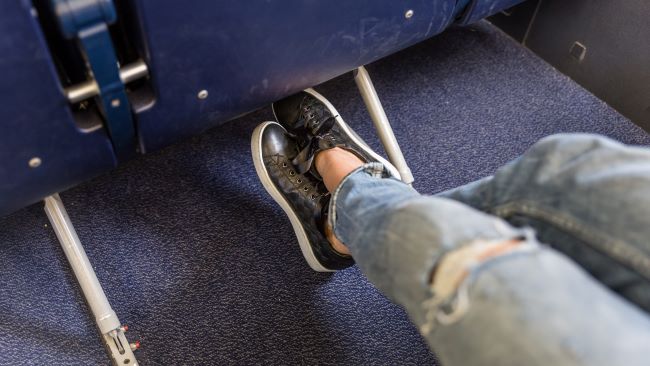If you’ve ever gotten off a flight with swollen feet, you may have been experiencing edema – swelling that results from trapped fluid in your body’s tissue.
But you’re not necessarily grounded. A few tweaks to your itinerary can help you travel comfortably, says Linda Hodgkins, a Hartford HealthCare occupational therapist and lymphedema expert.
Swelling is the result of pressure changes.
The source of the swelling, Hodgkins says, is the lymphatic system in your body, which she calls “a bunch of tiny drains.”
“For most people, changes in atmospheric pressure on a flight are not a problem because the system can handle it well. For other people, their systems can be a bit sluggish, and they can have some difficulty handling this excess fluid,” she says.
You may be more likely to experience swelling if you have diabetes or an injury like a sprained ankle. Inactivity during a long flight can also be a cause.
> Related: 5 Surprising Signs of Neuropathy
Three tips to control swelling when flying.
Hodgkins offers three tips to help you control swelling in your hands and feet on your next plane trip.
- Stay active. Try to move your muscles every 15-20 minutes. March in place or do ankle rotations. “During normal movement, your calf muscles contract and relax, working almost like a heartbeat to push fluid out of your legs,” She says. When you sit for hours, fluid could build up, causing swelling and, in rare cases, a blood clot.
- Plan your trip. Shorter flights gain less altitude and, therefore, create less atmospheric pressure. Stocking your bag with healthy, low-sodium snacks to help control swelling and blood pressure.
- Try compression socks. These can help prevent excessive fluid buildup in your legs by improving blood circulation. They provide graduated pressure, meaning they are tighter around the ankles and gradually loosen as they go up the leg. This helps to push fluids upward and prevents pooling in the lower extremities.
When to see a doctor (or therapist)
If notice consistent swelling or it lingers, it may be time to see an expert. An edema therapist can also help you select and correctly wear compression socks, which can actually increase swelling if not properly worn or sized.
“When you notice consistent swelling, we recommend you see an edema therapist because it can be the very beginning of a chronic condition,” Hodgkins says. “For folks in this situation, their lymph drainage issues could take 10 years to progress to a chronic and life-altering level. But that beginning point is the only time the condition could be truly prevented and reversed,” She says.


